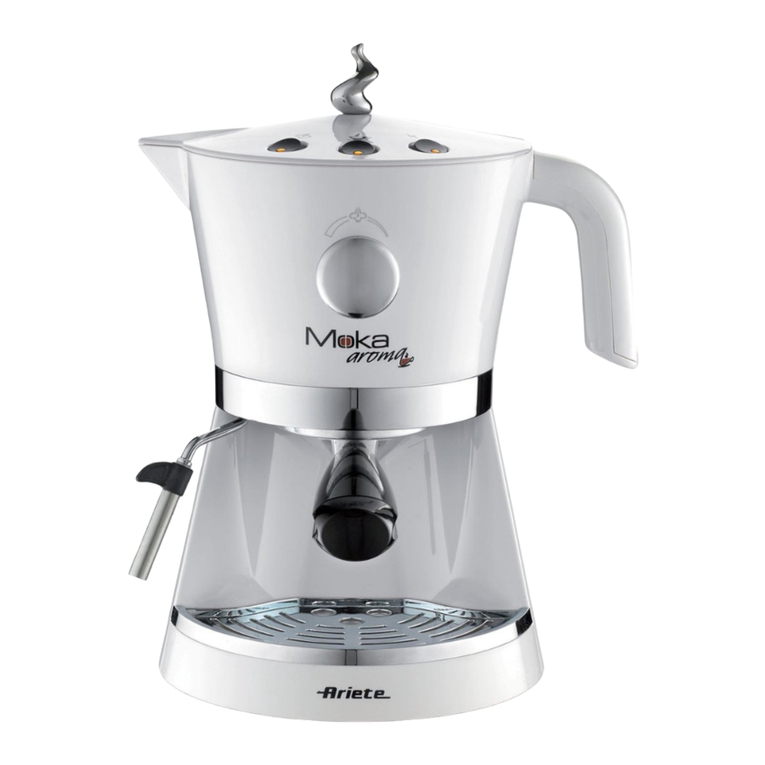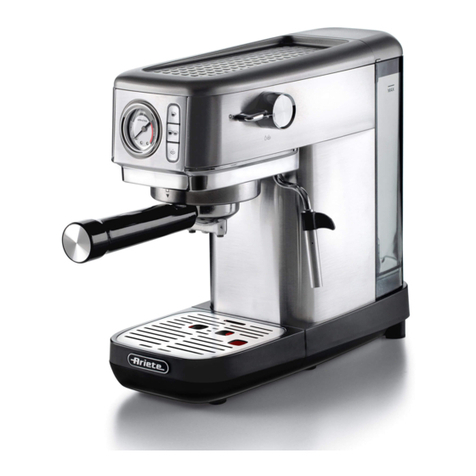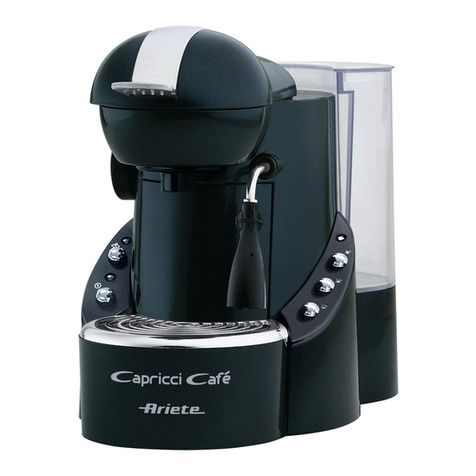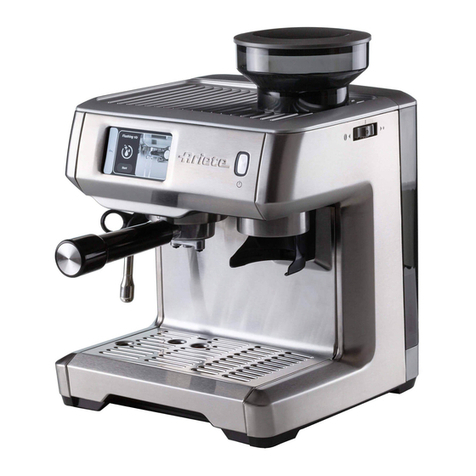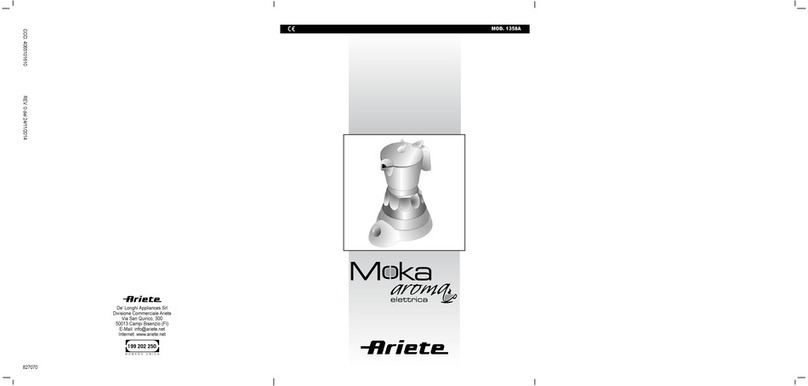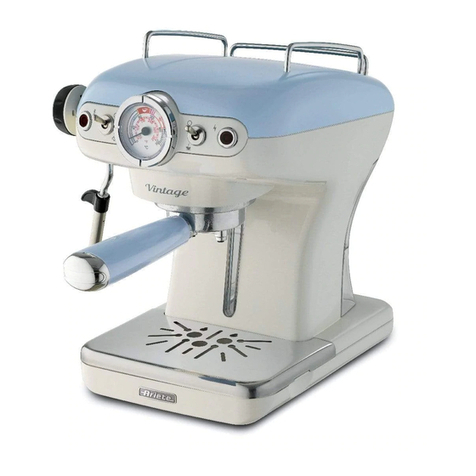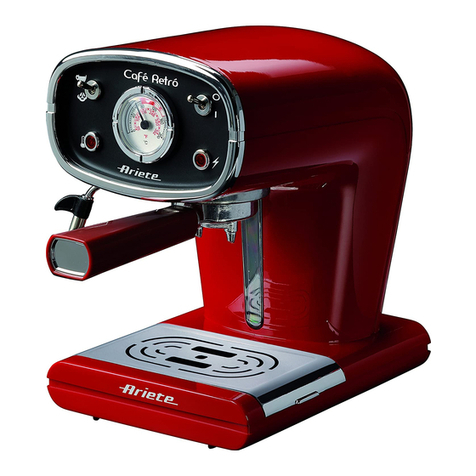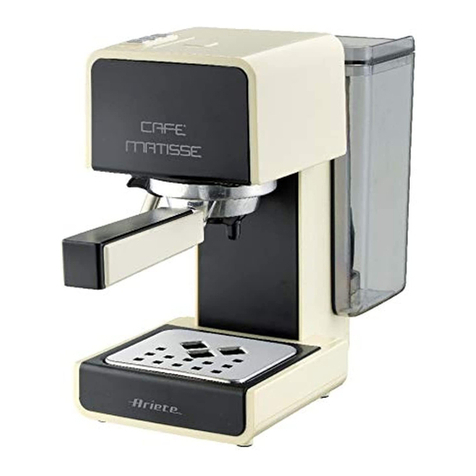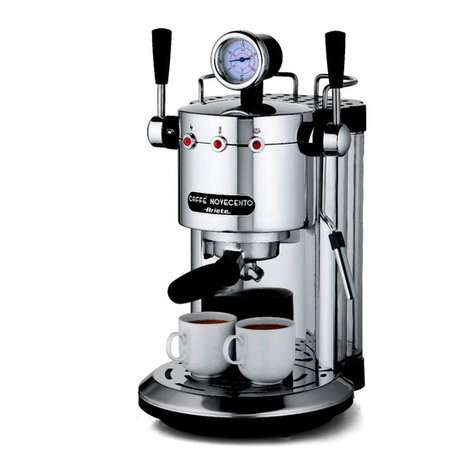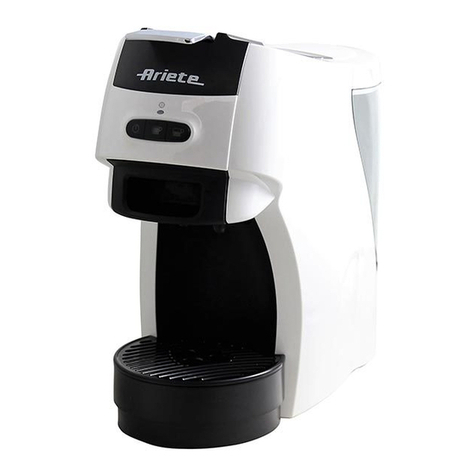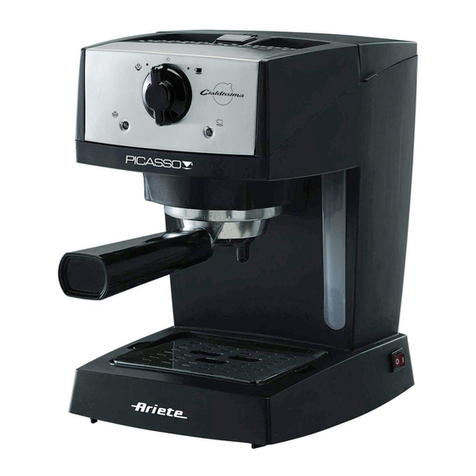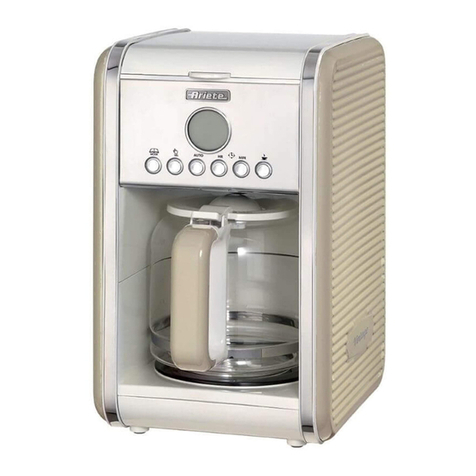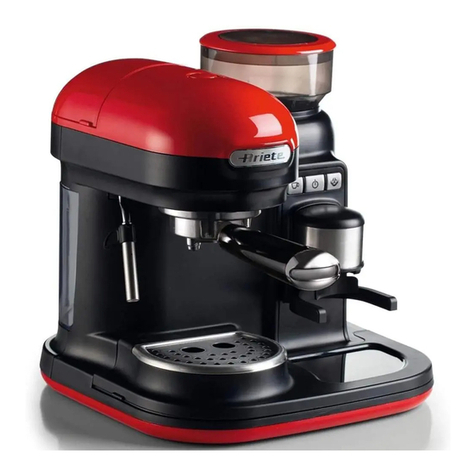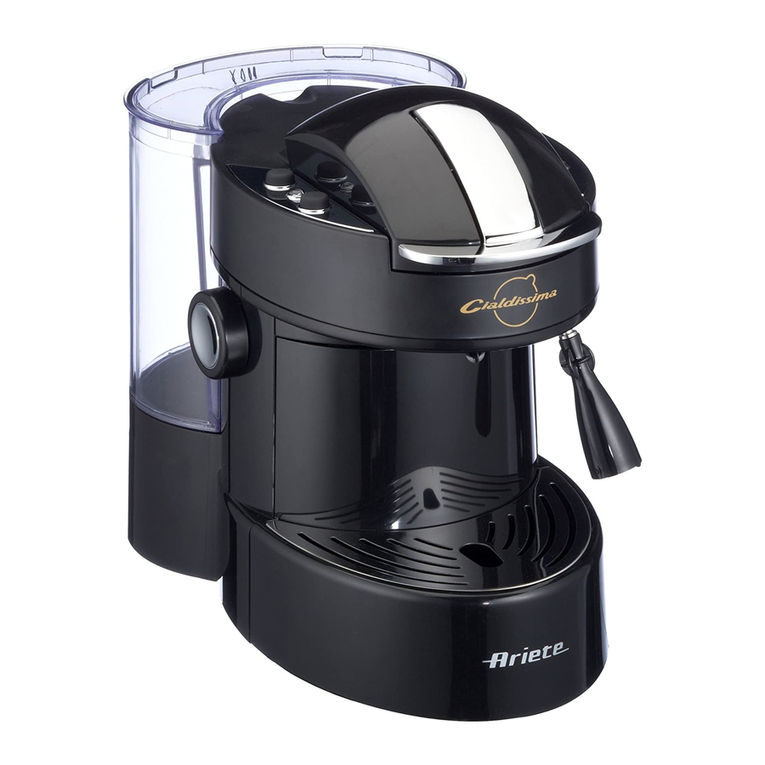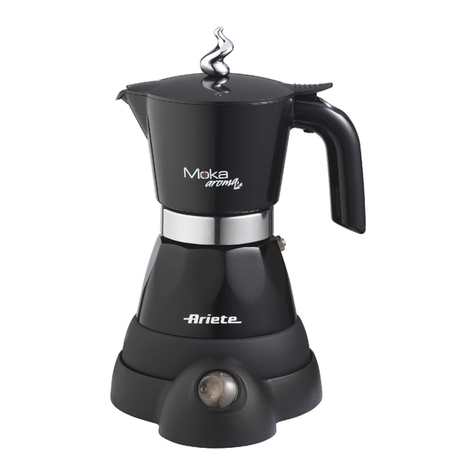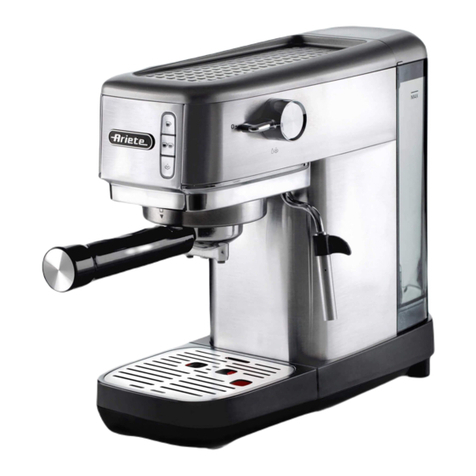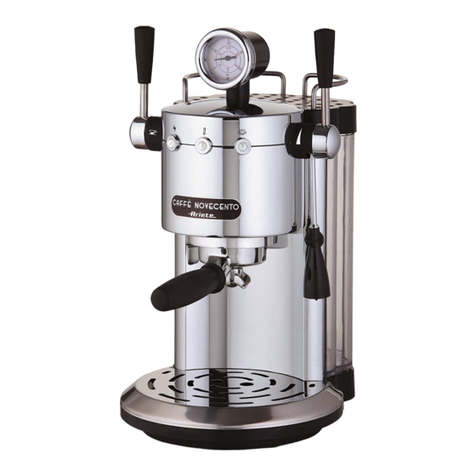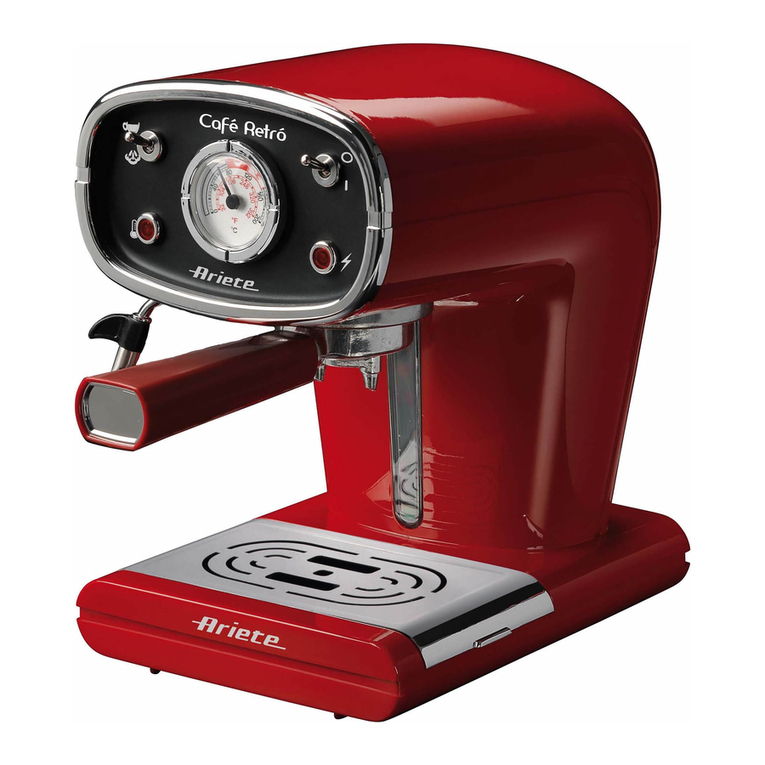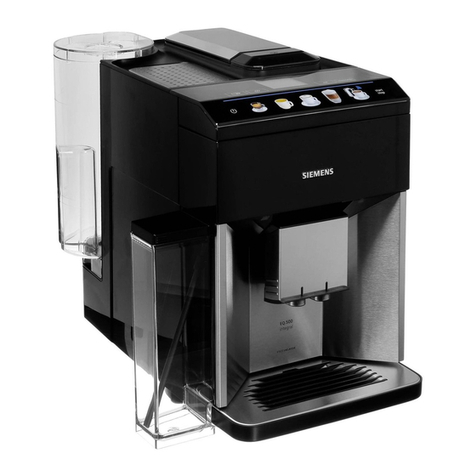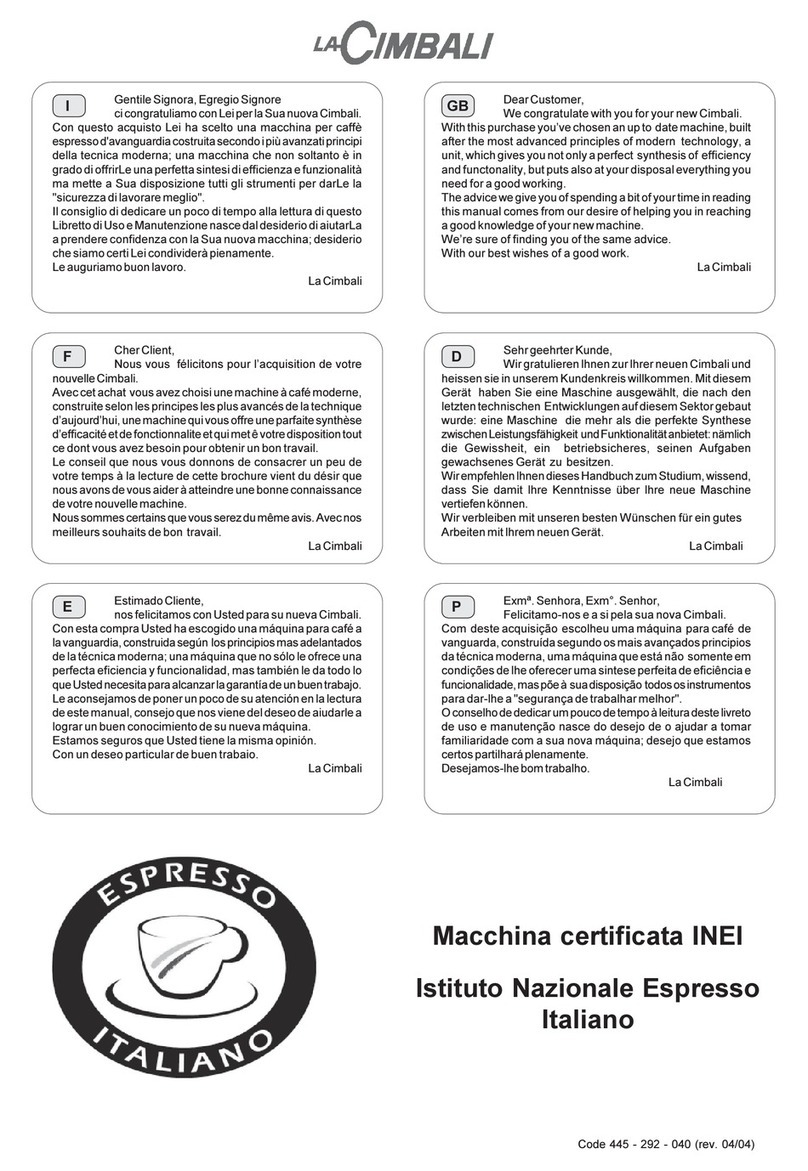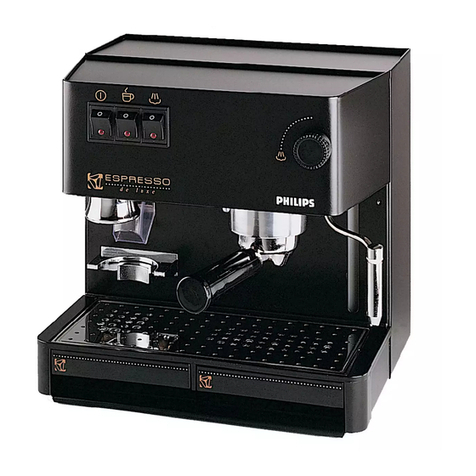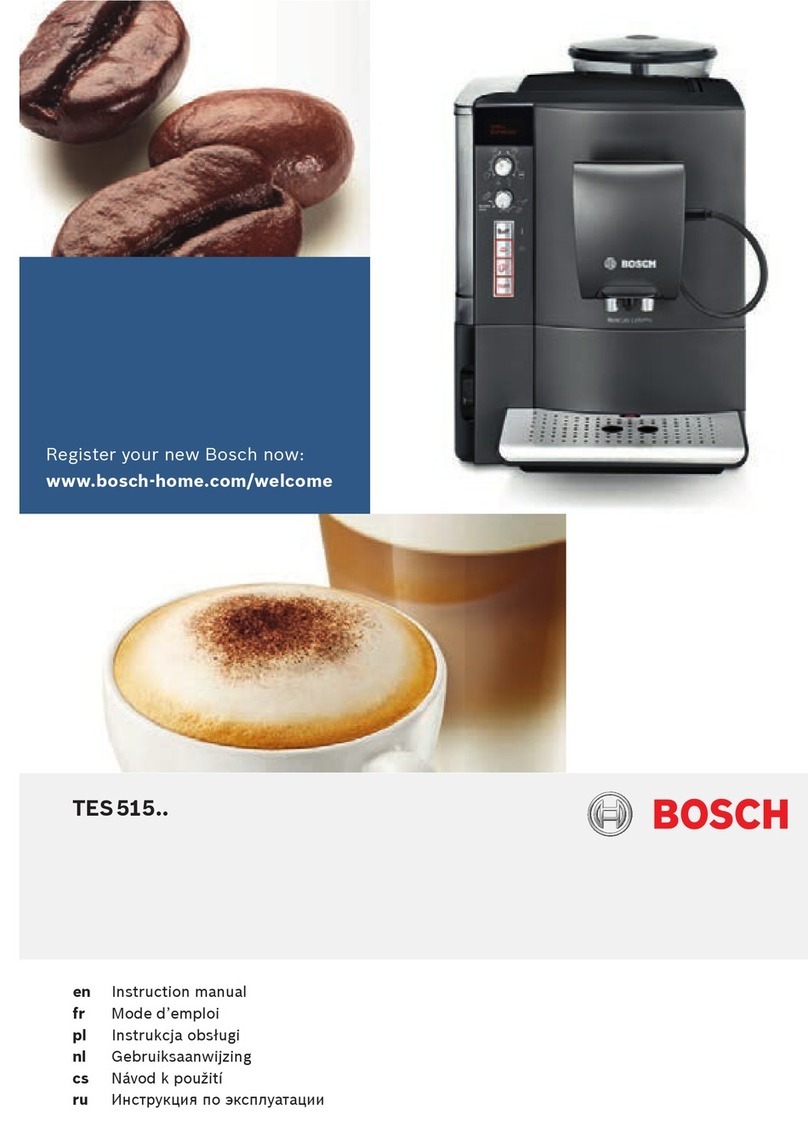
10
In caso di anomalie di funzionamento, spegnere immediatamente la macchina e slare la spina dalla presa elettrica.
C’è poca acqua e la pompa non
aspira. Vericare che il serbatoio sia ben inserito e controllare che il
livello dell’acqua nel serbatoio sia regolare.
Riempire con acqua naturale fresca no al livello indicato
“MAX”.
Foro di uscita vapore dello stilo
erogatore ostruito Stasare con uno spillo eventuali incrostazioni formatosi nel foro
dello stilo erogatore.
Probabilmente nel portaltro è
stata immessa una quantità ec-
cessiva di caffè macinato che ha
impedito di stringere a fondo il
portaltro nella sua sede.
Rimuovere e disinserire lentamente il portaltro perché l’even-
tuale pressione residua potrebbe provocare spruzzi o schizzi.
Ripulire la sede di aggancio con una spugnetta (Fig. 16). Ri-
petere l’operazione, immettendo nel ltro la giusta quantità di
caffè.
Sulla guarnizione della sede di ag-
gancio del portaltro sono rimasti
residui di caffè macinato.
Provvedere a ripulire la guarnizione con uno stuzzicadenti o
con una spugnetta (Fig. 14).
Il foro del disco in silicone è ottu-
rato. Lavare il disco in silicone (B) sotto l’acqua corrente piegandolo
leggermente ai lati in modo da liberare il foro centrale da even-
tuali residui di polvere di caffè che potrebbero ostruirlo (Fig. 15).
Il ltro contenente macinato ha i
forellini di uscita ostruiti. Rimuovere e disinserire lentamente il portaltro perché l’even-
tuale pressione residua potrebbe provocare spruzzi o schizzi.
Ripulire con uno spazzolino o uno spillo i forellini otturati del
ltro. Detergere il ltro utilizzando le pastiglie COFFEE CLEAN
di Ariete seguendo le istruzioni riportate nella confezione.
Cialda difettosa. Sostituire la cialda nel portaltro.
Il disco forato presente nella sede
di aggancio del portaltro ha i fori
ostruiti.
Azionare la macchina senza portaltro facendo deuire l’ac-
qua. Se l’acqua continua a non uscire uniformemente da tutti i
fori, eseguire la pulizia anticalcare utilizzando il prodotto Ariete
NOCAL reperibile nei centri di assistenza Ariete seguendo le
istruzioni riportate nella confezione.
Il ltro contenente macinato ha i
forellini di uscita ostruiti. Rimuovere e disinserire lentamente il portaltro perché l’even-
tuale pressione residua potrebbe provocare spruzzi o schizzi.
Ripulire con uno spazzolino o uno spillo i forellini otturati del
ltro. Detergere il ltro utilizzando le pastiglie COFFEE CLEAN
di Ariete seguendo le istruzioni riportate nella confezione.
Miscela di caffè macinata troppo
ne. Provare ad utilizzare miscele di caffè a grana più grossa.
Miscela di caffè troppo pressata. Pressare il caffè nel ltro con minor pressione.
Il serbatoio non è ben inserito. Inserire bene il serbatoio spingendolo a fondo.
Il foro del disco in silicone è ottu-
rato. Lavare il disco in silicone (B) sotto l’acqua corrente piegandolo
leggermente ai lati in modo da liberare il foro centrale da even-
tuali residui di polvere di caffè che potrebbero ostruirlo (Fig. 15).
C’è poca acqua e la pompa non
aspira. Vericare che il serbatoio sia ben inserito e controllare che il li-
vello dell’acqua nel serbatoio sia regolare. Riempire con acqua
naturale fresca no al livello indicato “MAX”.
Cialda difettosa. Sostituire la cialda nel portaltro.
Rottura della cialda. Togliere il portaltro, pulire la sede con una spugnetta e reinse-
rire una nuova cialda.
La miscela è stata macinata trop-
po grossa. Per ottenere un caffè più concentrato e più caldo, si deve usa-
re una miscela più nemente macinata. In ogni caso questo
problema si elimina grazie al Sistema Thermocream®, che as-
sicura sempre un caffè bollente ed una ricca crema, anche con
caffè macinato grosso.
